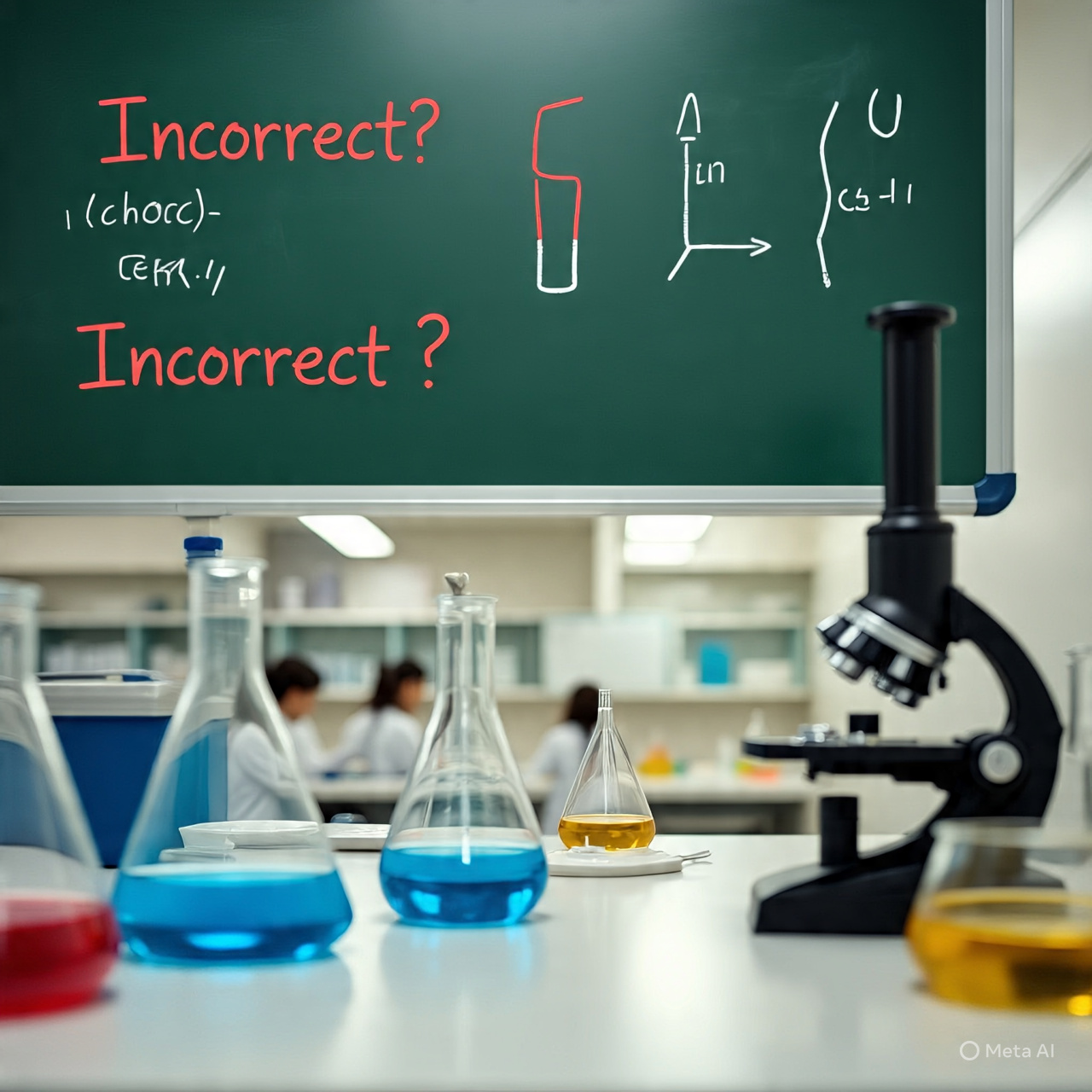Picture this: You’re sitting in chemistry class, feeling pretty good about today’s quiz. The first few questions are easy—naming simple compounds like NaCl and H₂O. But then you hit question four, and suddenly your confidence wavers.
“Which of these formula-name pairs is incorrect?”
Your pencil hovers over the options as doubt creeps in. They all look right at first glance… but there’s got to be a trick here somewhere.
If this scenario sounds familiar, you’re not alone. Chemical nomenclature trips up even the brightest students. Today, we’re going to play detective and solve this mystery together. By the end of this post, you’ll be able to spot naming errors faster than your professor can say “valence electrons.”
The Great Formula-Name Pair Challenge
Here’s your mission: Below are four chemical formula-name pairs. Three are perfectly matched, but one contains a sneaky mistake.
- NaCl – Sodium Chloride
- H₂O – Dihydrogen Monoxide
- FeSO₃ – Iron (II) Sulfite
- MN(NO₂)₂ – Manganese (IV) Nitrite
Go ahead—take a moment to scan them. Which one makes your inner chemist raise an eyebrow?
Breaking Down the Suspects
Let’s examine each pair under our scientific magnifying glass.
1. NaCl – Sodium Chloride: The Trusty Table Salt
Why it’s correct:
- This is chemistry’s most famous power couple
- Sodium (Na⁺) + Chloride (Cl⁻) = the salt on your fries
- No surprises here—this pair is textbook perfect
Fun fact: The average person consumes about 3.4 kg of this compound annually!
2. H₂O – Dihydrogen Monoxide: Water’s Fancy Alias
Why it’s correct (but sounds suspicious):
- “Di” means two (hydrogen atoms)
- “Mono” means one (oxygen atom)
- It’s just water wearing a tuxedo!
Warning: Some pranksters use this name to scare people about “dangerous DHMO exposure.”
3. FeSO₃ – Iron (II) Sulfite: The Underrated Compound
Why it’s correct:
- Fe²⁺ (Iron with +2 charge)
- SO₃²⁻ (Sulfite ion)
- Charges balance perfectly like a chemical seesaw
Bonus tip: Remember “ite” suffixes usually mean one less oxygen than “ate” suffixes (sulfite vs. sulfate).
4. MN(NO₂)₂ – Manganese (IV) Nitrite: The Imposter
Here’s where things go wrong!
Mistake #1: The Capital Crime
- Manganese’s symbol is Mn, not “MN”
- Chemical symbols are case-sensitive—this isn’t a shouting abbreviation!
Mistake #2: The Roman Numeral Ruse
- (NO₂)⁻ has a -1 charge
- With two nitrite ions, we need +2 to balance
- Should be Manganese (II) Nitrite, not (IV)
Imagine this compound sweating under interrogation: “Okay, okay! I’m really Mn(NO₂)₂!”
Why This Trips Up So Many Students
This particular mistake is like a perfect storm of common errors:
- Symbol Slip-Ups: That uppercase “N” looks innocent but changes everything
- Oxidation Overreach: Our brains often default to higher oxidation states
- Nitrite Confusion: It’s easy to mix up nitrite (NO₂⁻) and nitrate (NO₃⁻)
The Big Reveal: Which Formula Name Pair Is Incorrect?
After careful analysis, the odd one out is clearly:
“MN(NO₂)₂ – Manganese (IV) Nitrite”
The corrected version should be:
“Mn(NO₂)₂ – Manganese (II) Nitrite”
Becoming a Nomenclature Ninja
Now that we’ve solved the case, here’s how to avoid similar mistakes:
Element Symbol Checklist:
- First letter always capitalized
- Second letter always lowercase
- Mn, not MN (that’s Minnesota’s abbreviation!)
Roman Numeral Rules:
- Calculate the anion’s total negative charge
- Balance it with the cation’s positive charge
- That’s your Roman numeral!
Pro tip: For transition metals, always check—don’t guess the oxidation state!
Final Thoughts:
Remember that time you mixed up sulfate and sulfite? Or when you wrote “CL” instead of “Cl”? We’ve all been there. Chemical nomenclature is part memorization, part puzzle-solving—and entirely conquerable.
Next time someone asks “Which formula name pair is incorrect?”, you’ll be ready to:
- Spot incorrect symbols instantly
- Verify oxidation states like a pro
- Correct the mistake with confidence
Who knew being a chemistry detective could be this satisfying?



